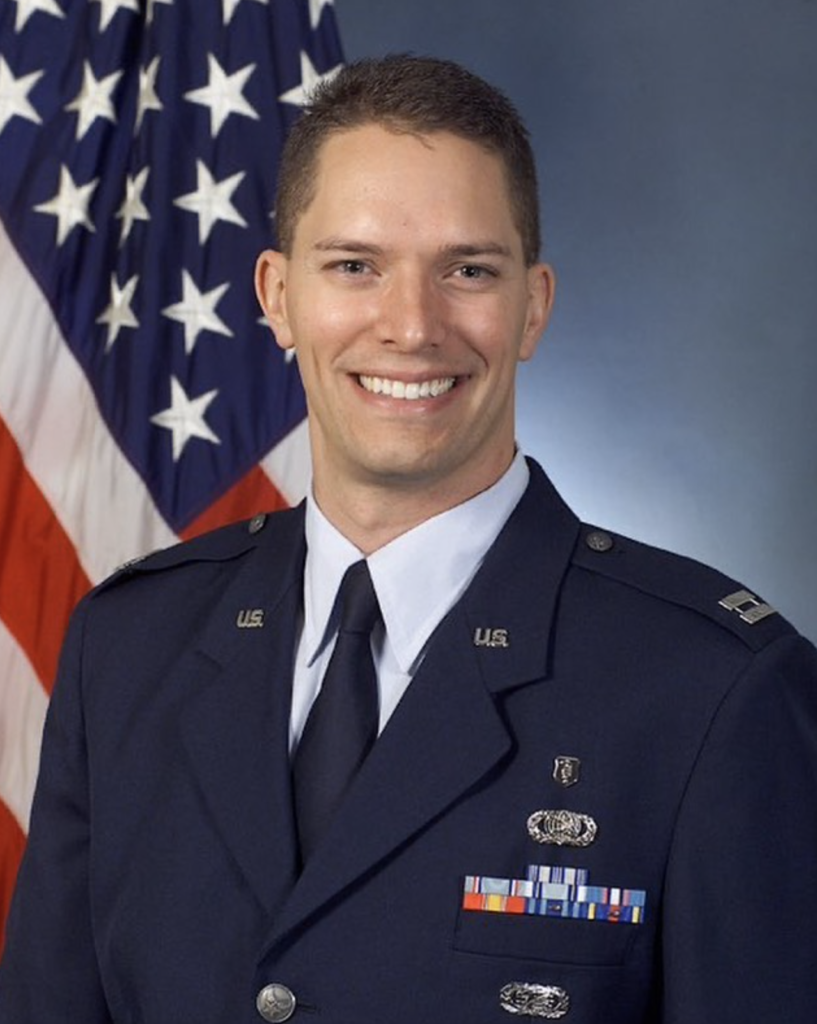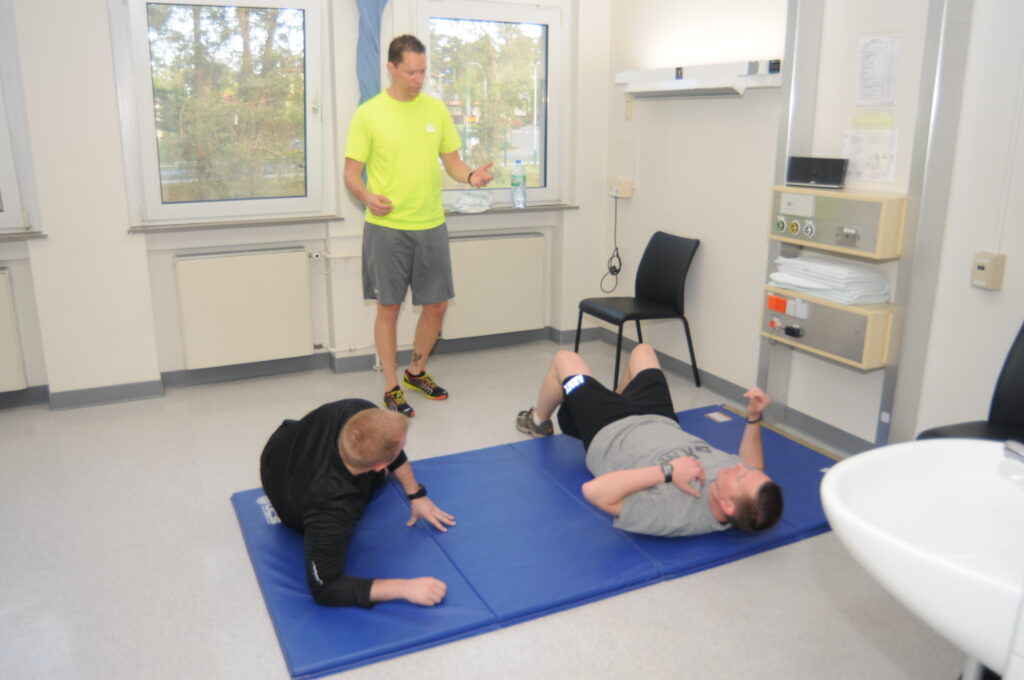
I remember sitting at lunch with my friend and the Director of Psychology at the Landstuhl Regional Medical Center in Germany. In the middle of picking at our food, my friend laid down his utensils and looked at me with his head tilted to the side as if he wanted to interrogate me.
“What are you doing with these people in your program?” my friend asked.
“What do you mean?” I replied.
“I have a couple of patients seeing you because of ankle issues, knee issues, and they're coming back to me and asking me to back them off their meds because they aren’t depressed anymore. We’re backing them off, but the only thing that’s changed is they’re going through your program.”
“It’s simple,” I said. I readjusted myself in my chair and perked my shoulders. I leaned forward. “I just get them moving.” The Fix is the master reset button for chronic pain. It’s an active, drug-free, functional physical therapy program based on the program I originally developed to treat combat-injured soldiers. The 12-session program is suitable for all people experiencing chronic pain or recovering from injury and surgery. This includes athletes, dancers, and patients of all ages and abilities. In the FIX’s treatment system, there are 27 dynamic stretches set up in three stages followed by six functional warmups. With every dynamic stretch and exercise, there are three to five modifications, so it doesn’t matter what injury someone has or stage of recovery they are in—the program will meet a person where they are at! Then, a patient proceeds into the model evaluated for their personal needs whether that need falls into the medical model or sports performance/enhancement model. The medical model is very controlled and modified carefully towards people who need to rehabilitate from an injury or post-surgery, or just improve their balance and strength. For example, an 80-year-old with multiple hip replacements would not undergo the same bodyweight movements or program as a professional ballerina. But they will share a common ground: They will move…but they will NEVER move through pain!
Pain is just like a GPS in your car. If you drive down the road using a GPS and pass your road, the GPS doesn’t say, “Pull over, turn off your car, and stop driving.” No. It recalibrates its navigation and finds an alternative route to the destination. The FIX taps into nature’s own GPS. If you do a lunge but you get a sharp, burning, or radiating pain in the knee, instead of stopping the lunge altogether, you just don’t go down as far. Whatever the exercise, it will get modified to keep you in motion towards your goal. At The FIX, we see pain differently than traditional medicine. Pain is not the fifth vital sign. It is the GPS that will guide you towards your max functional ability because “pain” is the symptom, not the problem. The problem is that you have lost the ability to move and live a life you can enjoy. We focus and treat the problem first and the symptom (pain) naturally reduces. These basic bodyweight movements adjust an individuals’ pain receptors to reduce pain and increase function. Eventually, your body adapts and suppresses pain.
There’s no reason or no excuse not to move! Just like an animal. It’s not dead. It’s moving.
So, how did I come across this program? I’ll tell you: By complete accident! 
The FIX’s journey dates to 2010 when I was working as an inpatient and outpatient physical therapist at the Army’s combat trauma hospital in Landstuhl, Germany. There, I would rehabilitate injured soldiers from the Iraq and Afghanistan wars back into combat with a team of eight physical therapists. The other therapists and I would receive 600 wounded soldiers a week, or 100 a day. These wounded soldiers ranged from injured ankles, shoulders, backs, to gunshot wounds, blast injuries, amputees, parachute accidents, inpatient care, outpatients care, etc. With a surplus of injured soldiers relative to the number of therapists, I needed to design a rehabilitation regimen to assess many soldiers at one time to determine if the walking wounded could return to battle, ultimately answering one question: Could the soldier jump out of a HUMV and engage the enemy wearing full battle gear, which is about 40 to 60 pounds, without the fear of his injury giving out? This plan became known as the Return to Duty Program. To figure out if the injury would give out or not, I needed to “break” them. So, I designed a 40-minute intense push, testing to see if the tissue in pain would give out. If the soldier’s injury “broke,” then the soldier would get sent back to the United States for more time to rehab. But if the tissue didn't break, give out, or become worse, then in three weeks, a soldier could return to duty. Considering these soldiers experienced catastrophic injuries, coming in with six to eight out of ten pain, I assumed most of their injuries would give out and they would be on their way back to the States. But the results of the process baffled me. After a couple of weeks in the program, the improvement the soldiers made when I tried to break them was nothing I had ever seen. I even started to push them harder and harder just to prove the lack of stability in their tissues. And still, they wouldn’t break. Contrary to my initial inference, their injuries got better. To me, it just didn’t make sense when these soldiers underwent such extreme pain. These injuries healed in a way I never thought imaginable. For example, one of my first patients in 2012 was a man with severe back pain. As with all my patients, I asked if he was taking any narcotics. The man replied with no. So, I started him through the program, telling him to work to the pain, but not through the pain. In three weeks, I discharged him. It wasn’t until after
the discharge did I get the MRI that showed the extent of a spinal fusion from his neck all the way down; a 17-level spinal fusion (T2-S1) and fusion of both SI joints. Had I received the MRI beforehand, I would have been afraid to treat him, and the entire program potentially may not have come to fruition. What I discovered was a person’s body could function contrary to what an MRI or an X-ray depicted. In fact, if I received any reports before treatment, I could go into the treatment with a preconception that a severe injury couldn’t handle this functional physical therapy approach.
In 2012, the war took a turn. Unlike previous wars when we drafted new soldiers every day to support the war, in this war we used a 100% voluntary fighting force. Additionally, the longest war to date was only 10 years in Vietnam, 3.8 years in WWII, 3.1 years in Korea. In 2012, we had been fighting TWO wars for eight years in Iraq and 19 years and 8 months in Afghanistan. Resources started shifting to sustaining a war in Afghanistan for an undetermined time and there weren’t as many combat soldiers. Some of my injured Special Forces had already spent up to five years in combat! Soldiers would experience severe pain from their combat injuries. As a result, they were prescribed narcotics. However, the narcotics would cause chemical imbalances in the brain, which led to depression. Eventually from a mix between pain, narcotic use, and depression, soldiers were more likely to die from self-inflicted gunshot wounds than on the battlefield. In the process of trying to reduce soldier suicides, Congress stepped in and assigned a task force to treat chronic pain, the affliction plaguing soldiers and causing them to get hooked on opioids in the first place. I got moved into the congressionally mandated program for opioid reduction and treatment of chronic pain under the Obama administration. The team consisted of an interventional pain doctor, a
pain psychiatrist, a physical therapist, an occupational therapist, a massage therapist, a yoga therapist, an acupuncturist, a chiropractor, and a biofeedback technician. Through the program I originally developed to return soldiers back to combat, I started treating chronic pain and found that as the pain in patients went down, so did narcotic use. Before I would get a patient, doctors would medically evaluate them to make sure they were safe to meet the minimum requirement to “move as tolerated.” Therefore, if a doctor said movement of any kind was acceptable, then I would put them through movements as long as no pain came out of it. After only three weeks in the program, not only did mobility increase, but other changes occurred. In most instances, soldiers are loaded with different prescriptions: sleep medication, pain medication, and antidepressants.
With chronic pain, people can have trouble sleeping; therefore, doctors would prescribe them sleeping medication. Yet, after a few weeks of going through my program, they no longer had problems falling asleep. Then, when patients would come in for rehab, they would show up, but they told me they completely forgot to take their pain medication! Generally, when people experience chronic pain daily, 
they run to their pain meds habitually, but all of a sudden around week three of the program, people were just not feeling as much pain. So, if they don't feel the pain, they just stop remembering to take their medication.
To have patients completely forget to take their narcotics indicated a correlation between the program and the deterrence for the need for medication. In fact, some patients didn’t even find it necessary to take their pain meds whatsoever. Then, as the program continued, patients would go to doctor’s appointments and ask the doctor to back them off their antidepressants. The results from the program helped soldiers battle their demons, return to combat, and take control of their life again. As I gained more experience doing over 20,000 treatments in my system with wounded soldiers my mentor, Dr. James Rainville, MD, associate clinical professor at Harvard Medical Center, did research proving that the program was safe and effective for non-military population of Boston ages 18-98. I found I could take the program and implement it into the general population. In 2018, I teamed up with my wife, Carla, in the medical practice she built for two German physicians. We started working off base, teaching other therapists, and running the rehab program to take care of civilians who worked on base. As with the soldiers, I saw the same improvements among the general population.
After two years in the civilian world and 29 years of military service, Carla and I decided it was time to leave Germany, so we chose to reside in Palm City, Florida. On December 10, 2021, we opened The FIX in Jupiter, Florida, ready to take this unique program to help U.S. citizens and take on the opioid epidemic afflicting the nation. No matter the injury, no matter the age of a patient, The FIX will help return a patient to a more functional life and make pain less of an issue. This is what I was called to do. This is what I love to do. This is The FIX. Like this article? Share it on Facebook!


